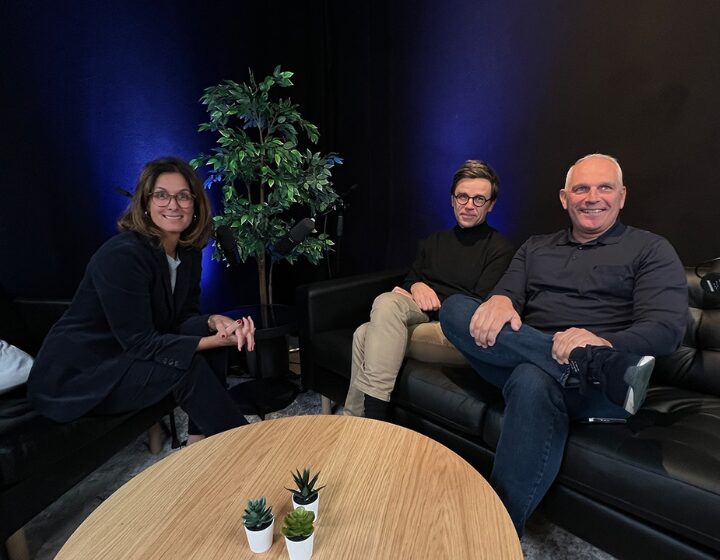
Targeted advertising with or without third-party cookies
Even with the increasing restriction of third-party cookies, we offer innovative solutions for successful online advertising campaigns – regardless of whether third-party cookies are used or not.
After four years, Google has abandoned its plans to ban third-party cookies in its Chrome browser. Instead, users will have the option of manually blocking cookies that are activated by default.
What does this mean for advertisers?
Despite this change of course by Google, third-party cookies continue to lose importance. Browsers such as Safari and Firefox have been blocking third-party cookies for some time now, which affects around half of the internet. For the advertising market, this means that in future we will have to rely on a variety of approaches to successfully reach target groups. At Ringier Advertising, we have been investing in efficient alternatives for years so that our customers can successfully play out advertising campaigns. If third-party cookies are available, we use them for precise advertising delivery. Otherwise, we use the following alternatives.
Alloy, our own data solution
One of our solutions is called Alloy. Alloy is a data-driven platform based on internal data generated within Ringier’s vast portfolio and it is supplemented by matching it to data in data clean rooms. If no such data is available and the audience is not addressable, Alloy offers an alternative solution known as contextual targeting.
The data-driven platform Alloy creates bespoke segments for accurate targeting. Initial evaluations indicate that Alloy achieves a 40% higher click rate than that of the leading provider of data-driven platforms in Switzerland.
A promising ID solution for Switzerland
Together with other Swiss publishers and their marketers, we have developed OneID. The digital advertising ID has been available to the advertising market since July. OneID enables advertisers to target Swiss users easily and without overlaps across different publishers. One of the specific applications is frequency capping, in other words, limiting the number of times a certain ad is shown to individual users.
The solution also offers advertisers more security and is intended to contribute to a transparent advertising landscape that takes data protection seriously while enabling effective targeting.
Our targeting solutions for online campaigns are split into addressable and non-addressable:
Addressable solutions
With addressable solutions, users can be identified and reached with a targeted ad, for example based on internal data.
solution #1
Internal data
Using internal data means that frequency capping and targeting can be applied to digital campaigns. Using technologies such as Ringier Star ID or OneID, will allow for the creation of user segments within the Alloy data solution based on socio-demographic data.
solution #2
Data clean room matching
In a data clean room, client data can be compared with publisher data. The individual data segments are thus created for clients – without sharing data between clients and publishers. You can therefore use your own client and user data in our digital network to expand your target group.
solution #3
Google Privacy Sandbox
We use Google Privacy Sandbox solutions to offer our clients addressable campaigns. Topics is one such example: the Google browser identifies the most common advertising themes of a user. Campaigns can therefore be targeted on the basis of these topics without much scatter loss.
Non-addressable solutions
With non-addressable solutions, no user data is used for the advertising.
solution #4
Contextual
With digital campaigns, specific segments based on themes are selected so that the ad can be placed in the most suitable contextual environment.
solution #5
Fixed placements
The conventional method of targeted advertising without data on the appropriate publisher’s website. Targeted selection of publishers in keeping with the theme allows the desired target group to be reached and reduces scatter losses.
solution #6
Campaigns to boost profile
Advertising campaigns are played out as broad as possible without targeting to create a big impact. A solution suitable for image campaigns aswell as product launches and when the aim is to boost the profile of the brand.
Combination of addressable and non-addressable solutions
In this scenario, solutions #1 Internal data and #4 Contextual are combined.
solution #7
Reach Data
By combining internal data and a contextual approach, it is possible to reach specific target groups throughout the entire Ringier Digital Network – from car lovers to future mums and foodies. The Ringier Digital Network includes some 30 media brands such as Blick.ch, blue News, Beobachter and L’Illustré, and guarantees high quality advertising environments. Instead of placing ads in predefined media titles, Reach Data allows clients to address their target group across different titles.
«The addressable solution based on our internal data is used by our advertising clients. We are always happy to hear that we are as prepared as possible for this new era.»
Alexandre Merk, Head of Digital Innovation at Ringier Advertising
Other articles on this topic
Your Point of Contact
Sign up for our newsletter and stay informed about current offers, product news and other news.






